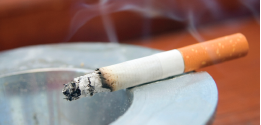The association between parent-reported postnatal secondhand tobacco smoke exposure in the home and neurobehavioral disorders (attention-deficit/hyperactivity disorder, learning disabilities, and conduct disorders) among children younger than 12 years in the United States was examined using the 2007 National Survey on Children’s Health. A total of 6% of 55 358 children (aged < 12 years) were exposed to secondhand smoke (SHS) in the home. The weighted prevalence and 95% confidence intervals of each of the children’s neurobehavioral outcomes were 8.2% (7.5–8.8) with learning disabilities, 5.9% (5.5–6.4) with attention-deficit/hyperactivity disorder, and 3.6% (3.1–4.0) with behavioral and conduct disorders. Children exposed to SHS at home had a 50% increased odds of having ≥2 childhood neurobehavioral disorders compared to children who were not exposed to SHS. Boys, older children (especially those aged 9 to 11 years), and children living in households with the highest poverty levels were at greater risk. The authors concluded that the findings of the study, which are associational and not necessarily causal, underscore the health burden of childhood neurobehavioral disorders that may be attributable to SHS exposure in homes in the United States. Pediatrics. 2011 Aug;128(2):263-270. PMID: 21746720.
Home Research News Secondhand smoke exposure increases the risk of neurobehavioral disorders among children







